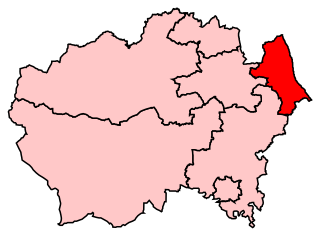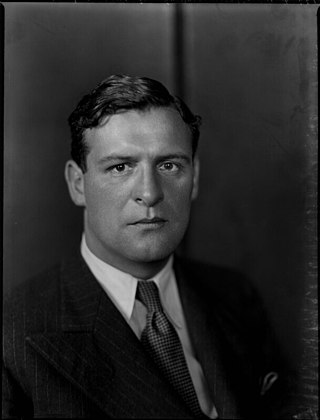
Emanuel Shinwell, Baron Shinwell, was a British politician who served as a government minister under Ramsay MacDonald and Clement Attlee. A member of the Labour Party, he served as a Member of Parliament (MP) for 40 years, for Linlithgowshire, Seaham and Easington respectively.

Sedgefield is a constituency in County Durham represented in the House of Commons of the UK Parliament since 2019 by Paul Howell of the Conservative Party. It elects one Member of Parliament (MP) by the first past the post system of election.

Easington is a constituency created in 1950 represented in the House of Commons of the UK Parliament since 2010 by Grahame Morris of the Labour Party.
Greenock was a burgh constituency represented in the House of Commons of the Parliament of the United Kingdom from 1832 until 1974, when it was abolished and its area was merged into the new Greenock and Port Glasgow constituency.

Stockton-on-Tees is a former borough constituency represented in the House of Commons of the Parliament of the United Kingdom. It elected one Member of Parliament (MP) by the first past the post system of election from 1868 to 1983.

Houghton-le-Spring was a county constituency of the House of Commons of the Parliament of the United Kingdom from 1885 to 1983. Centred on the town of Houghton-le-Spring, now part of the City of Sunderland, it elected one Member of Parliament (MP) by the first-past-the-post system of election.
The Hartlepools was a borough constituency represented in the House of Commons of the UK Parliament. The constituency became Hartlepool in 1974. The seat's name reflected the representation of both old Hartlepool and West Hartlepool.

Consett was a county constituency, centred on the town of Consett in County Durham. It returned one Member of Parliament (MP) to the House of Commons of the Parliament of the United Kingdom, elected by the first past the post voting system from 1918 to 1983.
Spennymoor was a county constituency centred on the town of Spennymoor in County Durham. It returned one Member of Parliament (MP) to the House of Commons of the Parliament of the United Kingdom, elected by the first past the post system from 1918 to 1950.
Penrith and Cockermouth was a parliamentary constituency centred on the towns of Penrith and Cockermouth in Cumberland, England. It was alternatively known as Mid Cumberland. It returned one Member of Parliament (MP) to the House of Commons of the Parliament of the United Kingdom, elected by the first past the post system.
South East Durham was a county constituency represented in the House of Commons of the Parliament of the United Kingdom. It elected one Member of Parliament (MP) by the first past the post system of election between 1885 and 1918.

Kenneth Martin Lindsay was a Labour Party politician from the United Kingdom who joined the breakaway National Labour group. He was the final Member of Parliament to be elected by the single transferable vote.

The 1936 Combined Scottish Universities by-election was a by-election held from 27 to 31 January 1936 for the Combined Scottish Universities, a university constituency of the British House of Commons.
The 1929 Bishop Auckland by-election was a parliamentary by-election held on 7 February 1929 for the British House of Commons constituency of Bishop Auckland in County Durham.

The 1921 Woolwich East by-election was a parliamentary by-election held on 2 March 1921 for the British House of Commons constituency of Woolwich East, in the Metropolitan Borough of Woolwich in London.
Evan Hayward was a Liberal Party politician in England.
James Kidd was a British Unionist Party politician in Scotland. He sat in the House of Commons from 1918 to 1922, and from 1924 until his death in 1928.

James Parker, CH was a British Labour Party politician.
William Hirst was a British Labour and Co-operative politician who was the Member of Parliament (MP) for Bradford South from 1924 to 1931.
The county of Durham has returned 7 MPs to the UK Parliament since 1983. Under the Local Government Act 1972, which came into effect on 1 April 1974, the boundaries of the historic/administrative county were significantly altered with the north-east of the county, comprising more than half the electorate, being transferred to the new metropolitan county of Tyne and Wear. In addition, the borough of Hartlepool was included in the new county of Cleveland. These changes were reflected in the following redistribution of parliamentary seats which did not come into effect until the 1983 general election, resulting in a reduction in the county's representation from 16 to 7 MPs.











